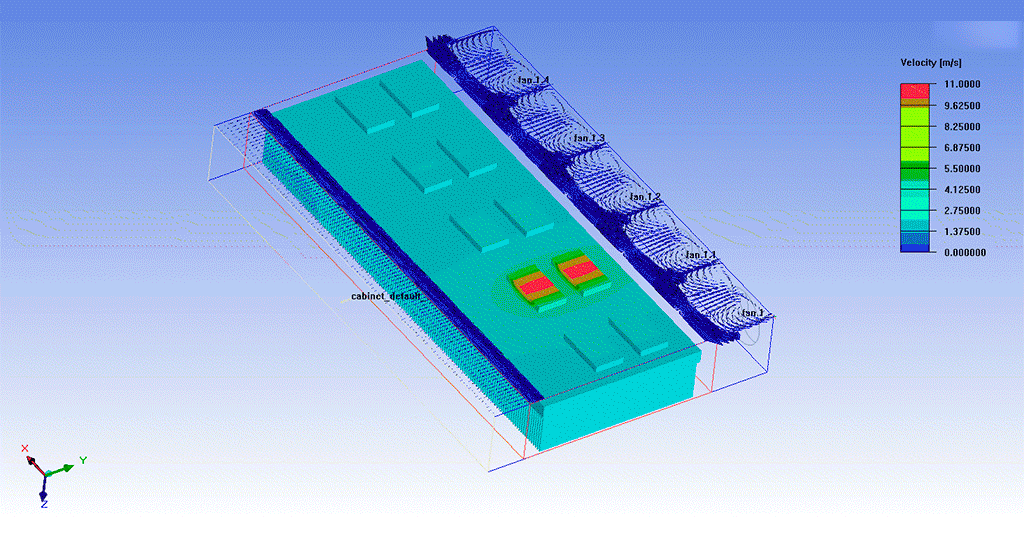The Technological Leadership of the Elenos Group – The Science and Artistry of Cooling
You might not realize the range of varied technologies that go into cooling today’s state of the art broadcast transmitter, and how the state of the art has advanced in the last few years. What just a few short years ago was a rather simple iterative process of designing transmitters that stayed cool, now involves a wide range of sophisticated technology.
The basic requirements haven’t changed – to transfer the heat generated in components and assemblies to the ambient quickly and efficiently. Bonus points for minimizing acoustic noise from the cooling system, and for minimizing the opportunity for dust and dirt to be pulled through the equipment and coat the components. And yes, to do this in a smaller form factor, and at less cost – a tall order indeed.
The process of designing the cooling system begins with the electronic circuit to be cooled, and the specifics of the physical configuration of the chassis. For simplicity, let’s assume we’re designing the cooling for a solid-state power amplifier module. Today’s PA device is typically a FET of some kind, and the case of the device has a specification for thermal resistance between the silicon die of the device and the part of the device case which is mounted to the heat sink.
Interestingly, the temperature of the silicon die during normal operation is more important than you might realize. “Metal migration” is a known phenomenon in power transistors, where the attachment points for the metal wires to the die can over time, leech into the silicon and result in the failure of the device. This effect is linear and can be roughly approximated by doubling the average device MTBF for each 10˚C cooler that the silicon die is kept.
The design of heat sinks may be more involved than it may appear. The Elenos Group has development engineers who specialize in sophisticated air flow computer modelling, maximizing the heat transfer while minimizing dust accumulation and acoustic noise. The specifics of the number, orientation and size of fins are all considered, as well as of the plate that is attached to the devices.
The object of the cooling system is to minimize the thermal resistance from the silicon die, through the heatsink and through the transfer of heat to the ambient air. The difference in temperature between the silicon die and ambient air is often referred to as the “quality” of the heat because it’s easier to cool the device when there is a large difference. That’s why cooling a power tube may be easier than a number of solid-state devices – the tube runs hotter than the transistors.
Sometimes the design of the cooling of solid-state devices requires extra measures beyond just a thin layer of heatsink compound, and a copper “heat spreader” is used to enlarge the contact area between the device and the heatsink. In some cases, the device is designed to be soldered directly to the spreader or the heatsink however, this can make field replacement more difficult.
While air cooling is more prevalent in FM and low power TV, it is often preferred in combined transmitter sites (where the cooling system can be shared by multiple transmitters), or in higher power TV. TV transmitters tend to have lower efficiency than FM, and thus the amount of heat to be removed is larger. While air cooling is often less expensive, and may require somewhat less maintenance, liquid cooling can result in a smaller transmitter, and the heat exchanger can be located outside, reducing the heat in the building. In addition, liquid cooling can be far less noisy than air cooling.
Many transmitter manufacturers offer both liquid cooled and air cooled versions of their higher power transmitters. When comparing the overall efficiency of air cooled versus liquid cooled systems, and thus the running costs, it’s important to include all the electrical loads, like the blowers or A/C in air cooled systems and the pumps and heat exchanger blowers in liquid cooled.
These advances in cooling technology in the past few years have resulted in dramatically improved reliability in todays transmitters.
